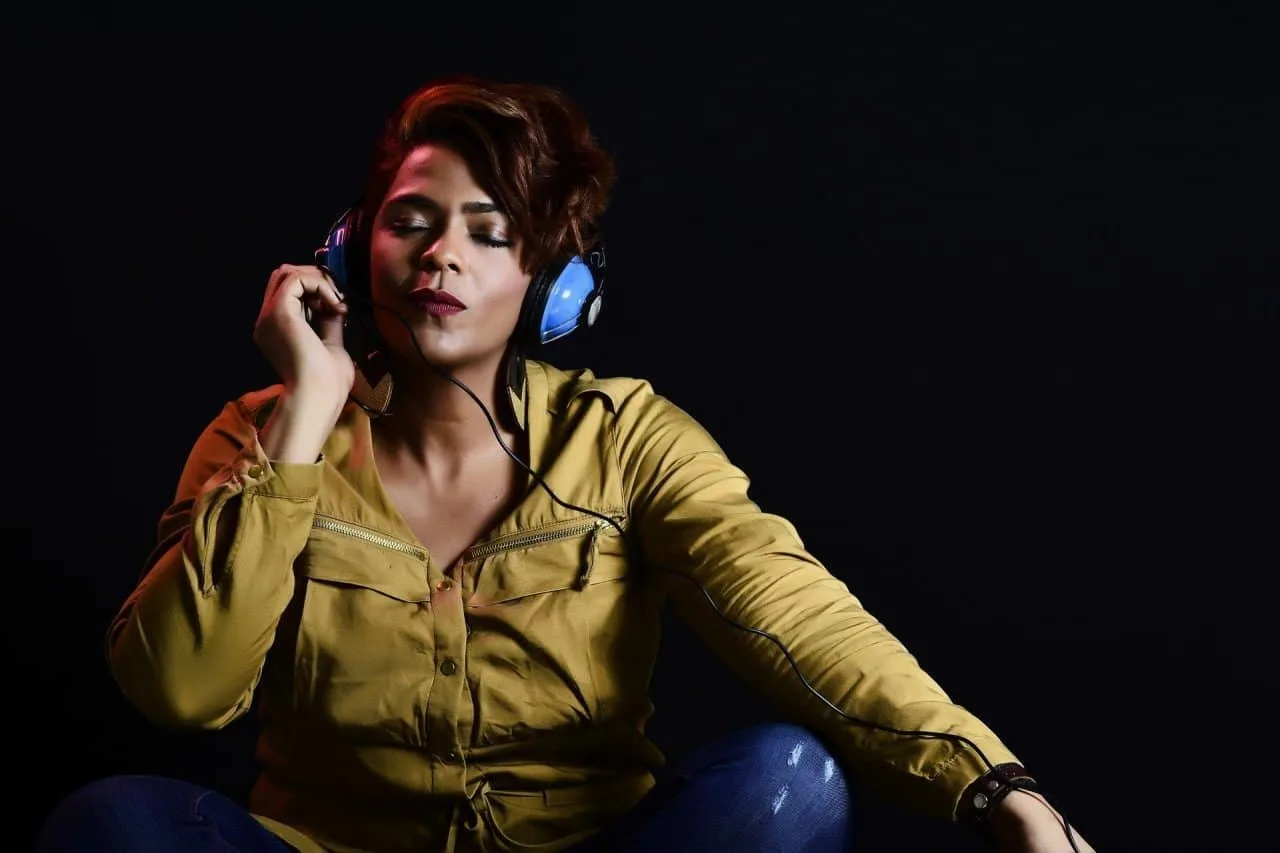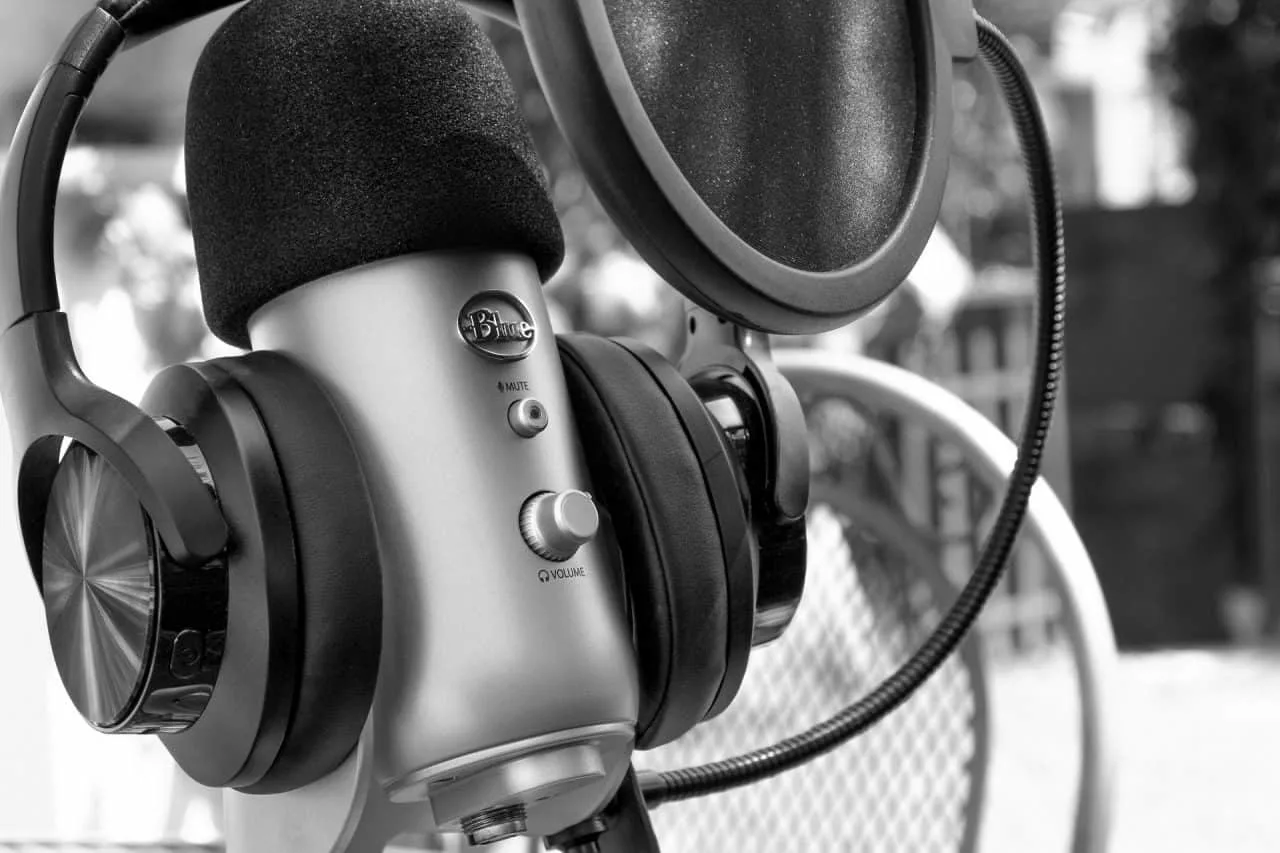Hearing your voice back for the first time after recording can be quite a shocking experience. Oftentimes, we have the perception that our voice sounds a certain way, then when it is played back to us it sounds much deeper or higher in pitch than anticipated.
Is your voice deeper than you hear it?
When you hear your voice on a recording, it commonly sounds higher in pitch than it does in your own head. This is because when speaking, the bones and muscle tissues in your head and face increase the prominence of low-end frequencies, making your voice sound deeper to your own ears.
Initially, it can be daunting listening back to the sound of your recorded voice.
The sound produced by the process of air conduction from a speaker is much different from the sound you hear when you talk. There will inevitably be some variations in the pitch and tone of your voice when it is recorded, but that shouldn’t deter you.
In this comprehensive guide, I’ll dive into the topic of why your voice sounds different when it’s recorded, and how you can overcome the challenges this poses.

Does Your Voice Sound Deeper to Yourself?
Perhaps you’ve taken part in a Zoom meeting, listened back to the recording, and felt surprised by the sound of your voice. Or maybe you want to start a YouTube channel, but feel self-conscious about the way your recorded voice sounds.
The reality is that the majority of people experience these reactions when they play back their recorded voices for the first time. Thankfully, there are some rational explanations for why your voice may sound different than you thought on a recording than it does in everyday conversations, and once you understand these, you can overcome your apprehensions.
The truth is, when you hear your voice back after recording it, that is the way that people hear it when you speak. The perception you have of your own voice is quite inaccurate for various reasons. To understand why this is, we need to explore some basic biology.
Deep within our inner ears, there is a complex system that allows us to hear sound.
A sound is heard when the vibrations reach the inner ear, and this can occur in two different ways. Most commonly, we hear sounds through a process called air conduction, when sound waves are transmitted through the air from the source to our ears.
So when you hear your voice after it’s been recorded, the sound waves leave the speaker, travel through the ear, and then reach your outer ear. They then travel through your eardrum, to the middle ear, and then reach the cochlea. This part of the ear is integral for hearing sounds, as it is responsible for converting the waves into audible sounds in your brain.
The reason that your voice sounds so different, and commonly deeper when you are talking rather than listening back to a recording, is because there is a simultaneous process occurring in addition to air conduction.
In everyday conversations, when you speak, the sound is generated by your vocal cords. Some of this sound does travel through the air, reaching your inner ear, but at the same time, the sound of your voice reverberates through the bones in your head and the various muscle tissues.
This results in you hearing a mixture of the sound waves being transmitted through the air from your mouth to your inner ear, and also the sound of your voice is directly sent to your inner ear through your head and face, explaining why it sounds so different compared to a recording!
It’s also very common to find that your voice seems to sound much higher in pitch when you listen to it through speakers. This is because the bones in your head and the other tissues and muscles enhance the prominence of the lower frequencies of your voice.
When listening back through speakers, there’s no sound being transmitted internally from your vocal cords to your inner ear, and therefore the low-end frequencies are reduced. This is usually the thing that makes us hate the sound of our own voices when recorded.
I can personally remember back to the early ’80s when me and my sister first got our first tape recorder and we were able to record our own voices!
When we played back our first recording we spent the whole time asking each other if we really sounded like that! To each other, we sounded completely normal but to ourselves, it was a strange experience.
I also remember watching an interview with John Lennon on TV years ago, and he also said he didn’t like hearing his own voice when recorded at all!
Why Don’t I Sound Good When I Record Myself?
It’s perfectly normal to think that you don’t sound good when you record yourself.
Even the most accomplished speakers, podcasters, radio hosts, and singers probably experienced the same feeling when they first listened back to their recorded voice.
The main reasons that we tend to dislike the sound of our recorded voice are:
- It sounds different from the voice you hear from within when you speak
- The recording equipment doesn’t suit your voice
- You feel self-conscious about your voice
- You aren’t used to the sound of your voice through a speaker
This mixture of physical and psychological factors is most likely causing the distaste of your voice when it is recorded.
Many people experience the same thing when they see themselves in videos if they aren’t accustomed to this. Similarly, this is caused by the variation in the way we perceive how we look, compared to how we look to others.
- Using equipment that suits the natural timbre and style of your voice is a great way to ensure that you get the best possible recording quality.
This won’t make you instantly fall in love with the sound of your recorded voice, but it will increase the chances of you learning to enjoy how it sounds.
Another factor that can be quickly improved is the acoustics of the space in which you are recording. Acoustics describes the physical dimensions and surfaces which make up an area, and they have a huge impact on the sound of a recording. That’s why you see large panels covering the walls in high-end recording studios.
It’s also important to ensure that you’re as relaxed as possible when recording your voice.
If you feel tense and nervous, this will be conveyed in the tone, pronunciation, and pitch. The result will be less natural, which is bound to make you dislike the recording because it increases the gap between what you are used to hearing, and the sound of your voice played back.
I’ll discuss the ways that certain microphones and other recording equipment impact the sound of your voice later on, but for now, it’s worth bearing in mind that this has a more significant impact than we might assume. Using pop filters and certain types of mic stands also contributes to the sound of the recording.

The main reason that you believe you don’t sound good when your voice is recorded, is psychological.
Just like any endeavor, it takes time and repetition for our brains to get used to the process. If you’ve only ever heard your speaking voice in real life, of course, you’ll be shocked and perhaps disappointed when you hear it recorded for the first time.
The key is to stick with it.
The more you record your voice and listen back to it, the more your brain will become familiar with the way it sounds. Indeed, your speaking voice is still likely to sound deeper and noticeably different, but the more you attempt it, the more you will be able to separate your everyday voice from your recorded voice.
Thanks to modern digital record technology, it’s extremely easy to record an infinite number of vocal tracks and listen back to them instantly. If you think your voice sounds bad on recordings, take advantage of the fact you can keep tweaking the way you approach it, and in the process, you’ll get familiar with the way it sounds.
The more you listen back to your voice on recordings, the less strange it will begin to sound to you.
It’s the same as learning a new skill, initially, there is some discomfort when we feel like we’re never going to get to the level we desire to be at, but eventually, something falls into place and we feel more and more competent through repetition and practice.
Recording Equipment That Suits Your Voice
To give yourself the best chance of enjoying the sound of your recorded voice, you must choose equipment that suits your tone and pitch. The most important part of your recording setup is the microphone. If you’re relying on your computer or laptop’s onboard mic, the sound quality is likely to be sub-par.
There are two main types of microphones used for voice recordings. These are:
- Dynamic
- Condenser
Dynamic microphones are generally used to capture louder sound with sharp transients. Drums, electric guitar, and loud vocals are three things that dynamic mics are commonly used for.
Condenser microphones, on the other hand, are more adept at recording delicate sounds with higher frequencies. In most cases, spoken word works best with a condenser microphone as it can capture the finer details of your voice.
- Condenser microphones are commonly used for recording ASMR. Check out my article on this subject here.
Nevertheless, you might find that your voice is better suited to a dynamic microphone if you speak loudly. Some people have naturally louder speaking voices than others, and dynamic microphones are certainly better at handling increased volumes than condensers at close range.
Desktop microphones, like the Blue Yeti, are useful because they can be placed on any flat surface for recording. This is convenient if you’re recording your voice in different locations, and it means you can easily transport it due to the lack of a large microphone stand.
Check out the versatile and very popular Blue Yeti here on Amazon. (Simple USB Microphone)

Take a look at this useful video on how to get set up with the Blue Yeti USB Microphone.
Lavalier microphones are also worth considering.
These devices feature a clip mechanism that allows you to attach them to a piece of clothing, removing the need for a stand. The advantage of Lav mics is that they are discreet and won’t detract attention in a zoom call or YouTube video.
It’s possible to get both wired and wireless lavalier microphones. The latter provides more freedom to move around when recording your voice, which may result in you feeling more comfortable and therefore capturing something you’re happier with.
Check out this excellent quality lavalier mic from Rode here on Amazon.
There are also some additional pieces of equipment that it’s worth considering adding to your recording setup. Notably, microphone stands and pop filters will impact the overall quality of the recording.
Choosing a sturdy stand that is compatible with your microphone is integral to ensuring you can concentrate fully on your recording, rather than worrying about it potentially becoming loose or falling.
Pop shields/filters are great tools for minimizing plosives, which are the sounds made by the air pressure from your lips when you speak. “P” and “S” sounds can be particularly detrimental to vocal recordings, therefore it’s worth considering adding a good quality pop filter to your recording setup.
How To Make Your Voice Sound Better When Recording
The key to making your voice sound better when recording is trial and error. If you find that you don’t like a certain aspect of the recording, take note and try to think of ways to rectify it.
The common problem of your recorded voice sounding too high in pitch can be rectified by focusing on speaking in a deeper voice.
- Proper pronunciation of words and the delivery of them can be rehearsed and improved with time.
It requires persistence and being honest with yourself about your progress. If you’re nervous about recording your voice, you’re likely to speed up and not leave adequate pauses between words and sentences.
Taking five deep breaths before beginning your recording is a great way to relax your body and mind, and ensure that your diaphragm and vocal muscles aren’t tensed up. If you are tense, this will lead to you speaking unnaturally and rigidly, which may result in you being less happy with the recording.
You can also experiment with the position of your microphone in front of your mouth.
If you get too close to the microphone, the audio may clip due to the volume being too high for the mic to handle. Finding the perfect position is important, and you should aim for it to produce clear audio without becoming distorted.
Avoid Being Over Critical Of Your Own Voice
Keep in mind that the people who know you and interact with you regularly are completely accustomed to the way that your voice sounds. The tone and pitch that you hear when you talk are indeed different from the actual tone and pitch of your voice, which is bound to shock you at first.
To other people, however, that is simply the way your voice sounds. If they were to record their voice, they would likely experience the same level of surprise at how different it sounds on a recording to the sound they hear when they speak.
It’s important to avoid over-criticizing your voice on the recordings and learn to accept the way it sounds. If you’re too focused on changing it, your speech will become unnatural and this will make the recordings sound strange to the listener.
I can’t stress enough just how important repetition is for building confidence.
If you take half an hour each day to record yourself reading from a book or simply talking into the microphone, then listening back to it afterward, you will soon become accustomed to the sound of your recorded voice.
The more you explore different recording methods, microphone placements, and pronunciation techniques, the more you will learn about what gets you the best results. You simply need to stick at it for some time, and you will certainly see improvements, mainly in your confidence!
Tips for Singers When Recording
The same issues occur when people record themselves singing as they do when recording spoken word, but the intensity is arguably increased. When we sing, we hear both the sound waves from our mouths and the inner vibrations which bass through our skulls and faces.
Again, your singing voice may sound higher in pitch than you’re used to hearing, but this is completely normal. Even the most accomplished singers will have experienced insecurity about the way their vocals sound when recorded when they first started.
Recording many different vocals takes and listening back to them is the best way to assess how you can improve the way your singing sounds. It may also help to figure out which vocal register you belong to so that you can use EQ and different recording methods to ensure you capture your voice successfully.
You can find your vocal range using a piano to figure out where your voice sits concerning these guidelines:
| Vocal Register | Note Range |
| Soprano | C4 – E6 |
| Mezzo Soprano | A3 – F5 |
| Alto | F3 – D5 |
| Tenor | B2 – G4 |
| Baritone | G2 – G4 |
| Bass | E1 – C4 |
Related Questions
Can you change the pitch of your recorded voice?
It is possible to change the pitch of a vocal track using pitch-correction software. I have personally done this as a child but mainly for comedic effect! However, if this is used drastically, it can result in your voice sounding unnatural. You don’t want to suddenly sound like Alvin and the Chipmunks!
How can I hear my voice as I record it?
The best way to get a clear representation of your voice as you record it is by using monitoring. You can wear a set of headphones, and set up direct monitoring on an audio interface, which will allow you to hear your speech in real-time.
I have written a guide to help you get started using an audio interface. You can read it here.
Do microphones change the way your voice sounds?
Microphones come in many different shapes and sizes, with varying specs. Factors such as the frequency response of the microphone, and the way they color the audio will certainly change the way your recorded voice sounds.
